CANFOR Canal Flats
All photographs by the author: Phil Mason
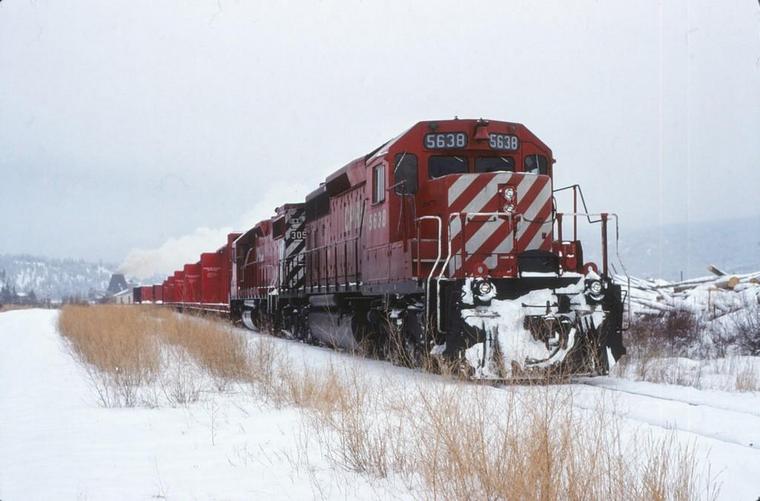
5638_309x with empty bulkhead flats on way freight. 1991
Canadian Forest Products has announced they will permanently
close their Canal Flats BC saw mill at the end of October 2015, causing
75 poeple to lose their jobs. CFP cites a lack of nearby harvestable
timber and a downturn in the economy for the decision to close the mill.
CFL is the only employer in this south eastern BC community. Along with
several other long established forest product communities around BC,
Canal Flats was predominantly Francophone. (Lumby BC is another, as
is the Malliardville district of Coquitlam BC).
The mill was Crestbrook Forest Industies in the 1970's (Creston-Cranbrook),
and owned an ex-CP HS-5 diesel hydraulic switcher. Along with another
HS-5 from the Coleman coal mine in Alberta, this locomotive has found
its way to the Fort Steele historic park in the hopes that between the
two of them, an operable locomotive can be made. Good luck.
Canal Flats is located in the "Rocky Mountain Trench", a huge
glacial valley which contains the headwaters of the Columbia River.
A 19th century entrepreneur constructed a short canal between Columbia
Lake south into the headwaters of the Kootenay River. It is unclear
how many vessels passed through the canal.
The CP Windermere Sub. was chartered as the Kootenay Central, and is
a north-south line connecting the main line at Golden BC to Colvalli
BC on CP's route across southern BC.
Until the late 1960's, this was a quiet, light rail branch line. Way
freight service was operated two times a week, Colvalli to Lake Windermere
one day, and Lake Windermere to Golden the next. A number of sawmills
along this 150 mile long sub kept. the wayfreight busy.
When Kaiser Resources decided the re-open the Balmer Pit at Sparwood
BC in the late 1960's, the decision was made to upgrade the CP Windermere
Sub. At the same time, the creation of Lake Koocanusa behind the Libby
Dam required the relocation of portions of the CP Cranbrook Sub. As
a result, the junction between the Windermere and Cranbrook Subs was
relocated to Fort Steele BC. Also in this time frame, Crestbrook Forest
Products located a major pulp mill at Skoocumchuck BC, on the Windermere
Sub.
At that time, the train operations on the Windermere Sub. settled into
a pattern that would persist for decades.
The coal trains were operated by unassigned train and engine crews based
at Cranbrook who operated the coal trains between Fort Steele and Golden,
with an away from home terminal at Golden.
The general merchandise freight from Cranbrook to Golden and west to
Vancouver on the main line for decades was the KCN and KCS (Kootenay
Central North or South).
Between Golden and Skookumchuck or later Fort Steele, this operated
as a seven day a week way freight with two assigned crews. A road switcher
between Skookumchuck and Cranbrook for many years handled the general
merchandise south and east, and the wayfreights terminated at Skookumchuck.
During traffic fluctuations, the way freights continued south to Fort
Steele or even Cranbrook.
At sometime in the past, a log loading yard was established at Parson
BC south of Golden , where logs for the Canal Flats sawmill were loaded
onto a fleet of Crestbrook Forest Industry flat cars for delivery to
the Canal Flats mill.
This log shuttle became a duty carried out by the Windermere Sub way
freights. Sometime in the 1990's, the Parson load out was closed in
favour of highway trucks.
The Canal Flats mill was located on the east side of the valley, and
the Windermere Sub. was on the west side, meaning a mile long spur was
required to access the mill. This spur crossed BC Highway 95 and a paralell
logging road en route to the mill.
There were several yard tracks at the mill. Sometimes, the entire way
freight would clear the CP siding and main at Canal Flats.
After cabooseless operations were established, a former CP caboose was
stationed at Canal Flats to act as a riding platform while backing the
train along the mile long spur and over Highway 93/95 and logging road
crossings.
Once the mill closes, a part of the spur will be retained for gypsum
loading.
A couple of years ago, the way freights were eliminated in favour of
having unassigned crews do the work, and the old KCN and KCS symbol
was replaced by 500 numbers.
While the way freights operated, they were reliable day time freights
on the "Windy" so many photographs exist of them.
I did work the Windy way freights in the 1970's as a trainman. Phil
Mason
These images are all of the way freight working at Canal
Flats.
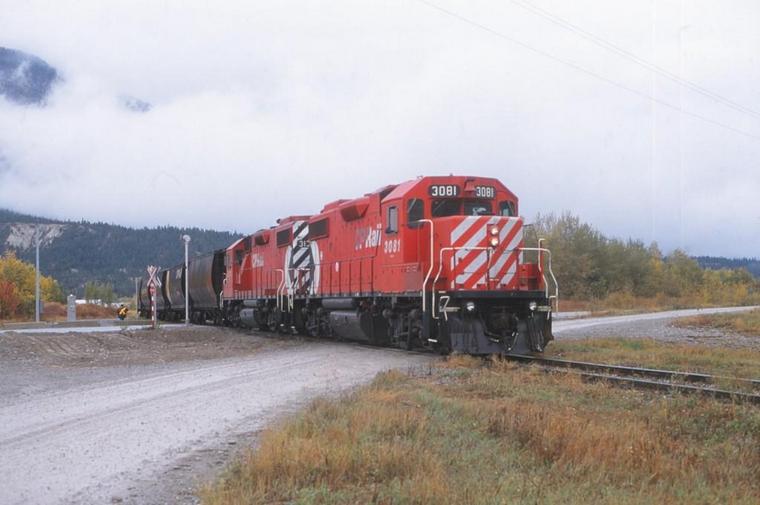
3081 with way freight crossing logging main 1999
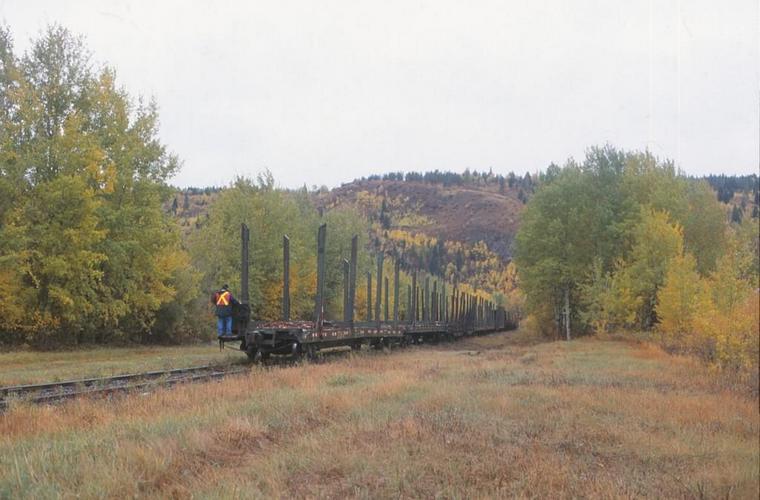
Empty logging flat cars part of above train with engine
3081. 1999
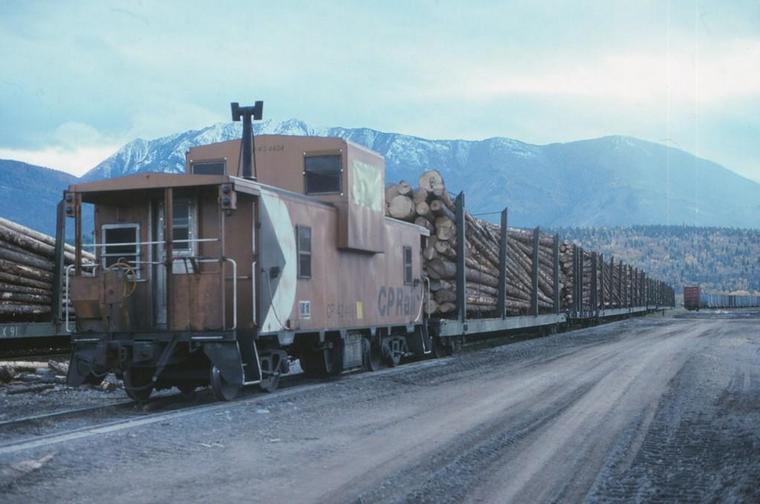
Loads of logs on the way freight. 1995
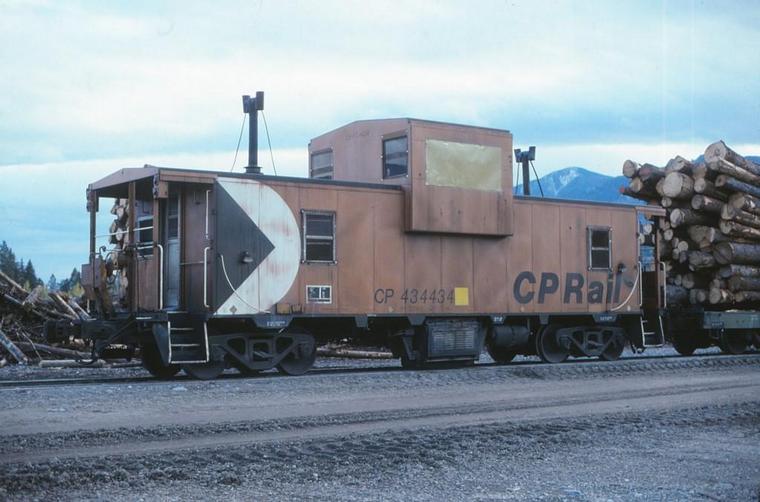
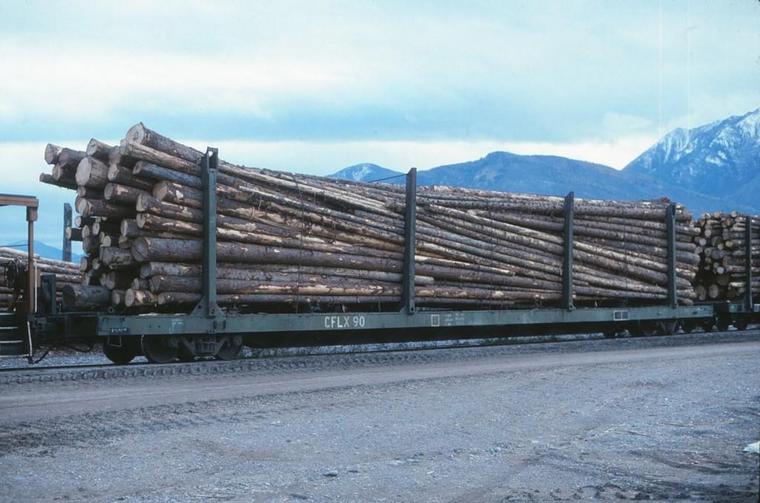
CFLX 90
